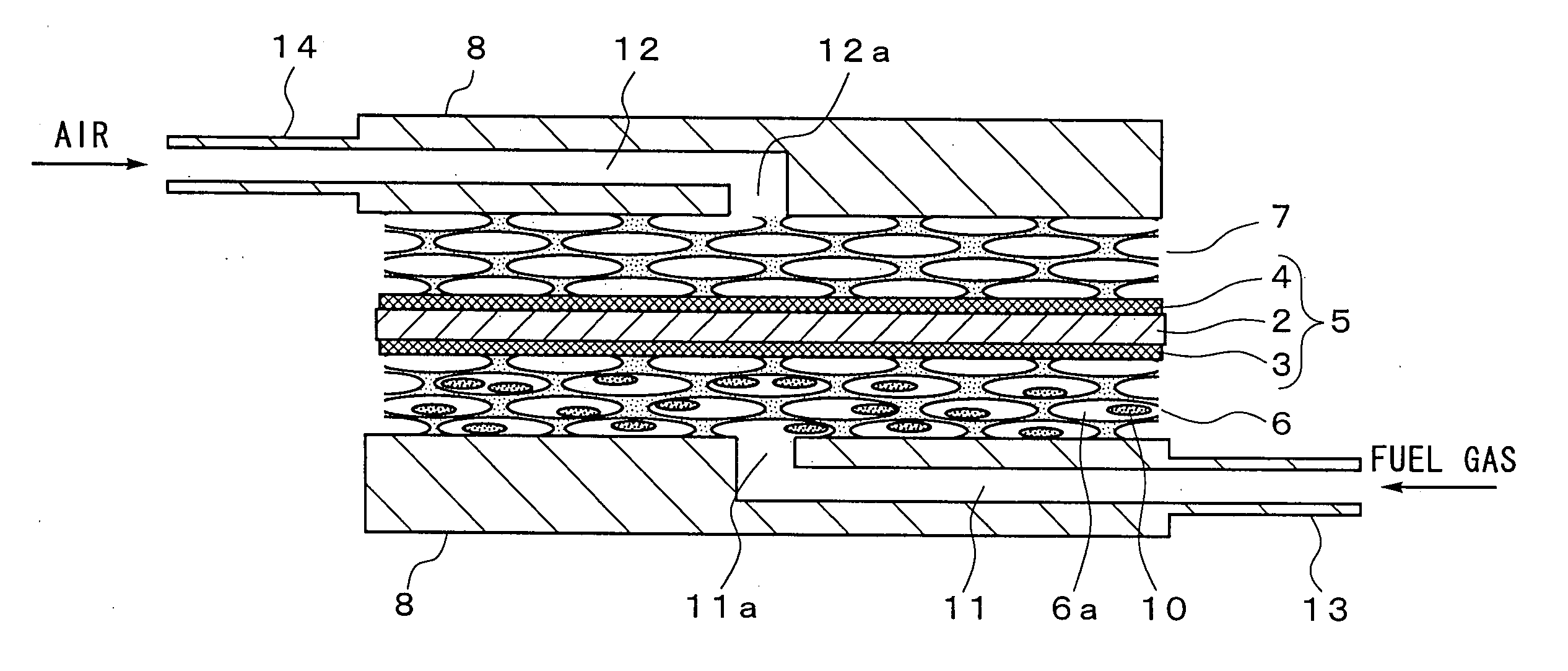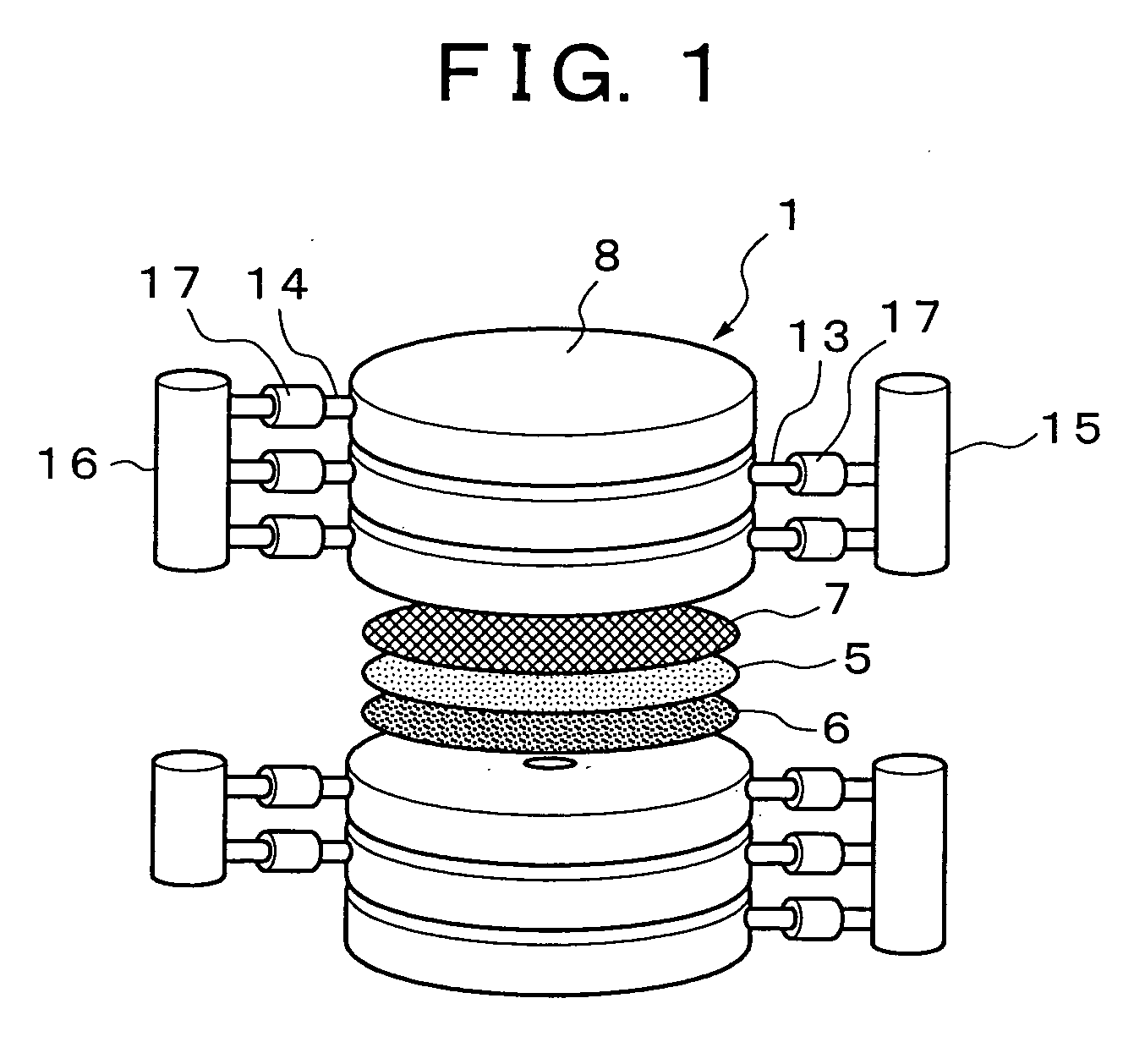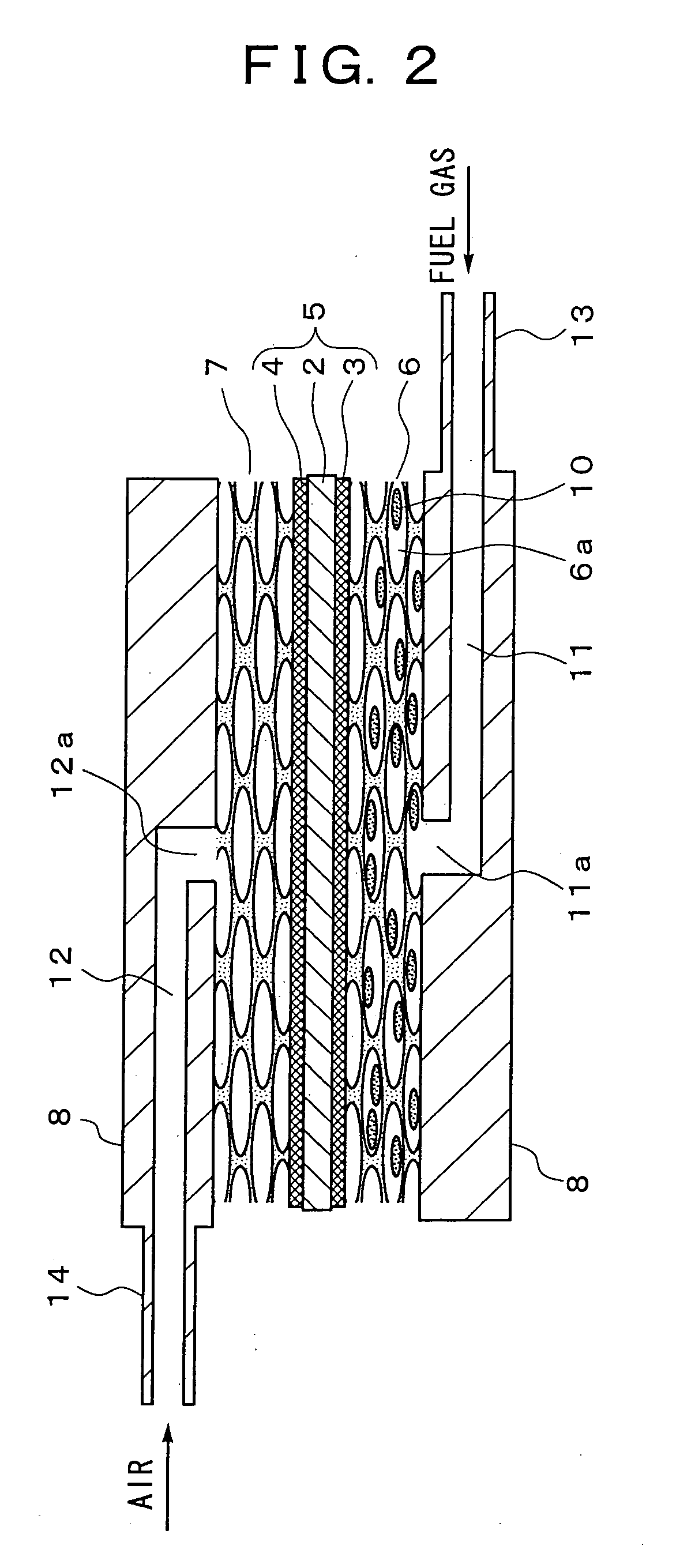Solid oxide fuel cell
a fuel cell and solid oxide technology, applied in the direction of cell components, electrochemical generators, chemistry apparatuses and processes, etc., can solve the problems of premature decrease of the power generation performance of the power generating cell, corresponding reduction of the efficiency of the power generating system, and reduction of the cell performance, so as to achieve efficient and stable power generation and excellent reforming capability
- Summary
- Abstract
- Description
- Claims
- Application Information
AI Technical Summary
Benefits of technology
Problems solved by technology
Method used
Image
Examples
first embodiment
A First Embodiment
[0060] A first embodiment of a solid oxide fuel cell of a flat-plate stacking type according to the present invention will be illustrated. FIG. 1 is an exploded perspective view showing a fuel cell stack construction. FIG. 2 to FIG. 4 are sectional views showing essential parts of fuel cell stacks different from each other.
[0061] As shown in FIG. 1 to FIG. 4, a fuel cell stack 1 (hereinafter, referred to simply as stack 1) has a structure in which a power generating cell 5 disposing a fuel-electrode layer 3 and a air-electrode layer 4 on both surfaces of a solid electrolyte layer 2, an fuel-electrode-side porous metal 6, an air-electrode-side porous metal 7, and separators 8 on the outer sides of the porous metals 6 and 7, respectively, are stacked in the order.
[0062] The solid electrolyte layer 2 is composed of a stabilized zirconia doped with yttria (YSZ), etc.; the fuel-electrode layer 3 a metal of Ni, etc. or a cermet of Ni-YSZ, etc.; the air-electrode layer ...
second embodiment
A Second Embodiment
[0085] Now, a second embodiment of a solid oxide fuel cell according to the present invention will be illustrated. In the embodiment, the same reference numerals are given for the same components as in the first embodiment described above, and their explanation is simplified.
[0086] A fuel cell stack 1 of the embodiment, as shown in FIG. 5, has a structure in which a fuel-electrode current collector 21 and an air-electrode current collector 22 are disposed on both sides of a power generating cell 5, and separators 8 are disposed on the outer sides of the current collectors 21 and 22.
[0087] A power generating cell 5 has, as shown in the first embodiment described above, a lamination structure in which a solid electrolyte layer 2 is interposed between an air-electrode layer 4 and a fuel-electrode layer 3. The solid electrolyte layer 2 is composed of a stabilized zirconia doped with yttrium (YSZ), etc. and the air-electrode layer 4 is composed of LaMnO3, LaCoO3, etc...
third embodiment
A Third Embodiment
[0099] A third embodiment of a solid oxide fuel cell according to the present invention will be now illustrated. In the embodiment, the same reference numerals are given for the same components as in the embodiments described above to simplify the description thereof.
[0100] In the third embodiment, as shown in FIG. 7 and FIG. 8 as in the second embodiment described above, a stack unit is constructed of a power generating cell 5 in which a fuel-electrode layer 3 and an air-electrode layer 4 are disposed on both surfaces of a solid electrolyte layer 2, a fuel-electrode current collector 31 disposed on the outer side of the fuel-electrode layer 3, an air-electrode current collector 32 disposed on the outer side of the air-electrode layer 4, and separators 8 disposed on the outer sides of the current collectors 31 and 32, respectively, a plurality of the stack units being stacked into a cylindrical fuel cell stack 1.
[0101] The solid electrolyte layer 2 is composed of...
PUM
 Login to View More
Login to View More Abstract
Description
Claims
Application Information
 Login to View More
Login to View More - R&D
- Intellectual Property
- Life Sciences
- Materials
- Tech Scout
- Unparalleled Data Quality
- Higher Quality Content
- 60% Fewer Hallucinations
Browse by: Latest US Patents, China's latest patents, Technical Efficacy Thesaurus, Application Domain, Technology Topic, Popular Technical Reports.
© 2025 PatSnap. All rights reserved.Legal|Privacy policy|Modern Slavery Act Transparency Statement|Sitemap|About US| Contact US: help@patsnap.com



